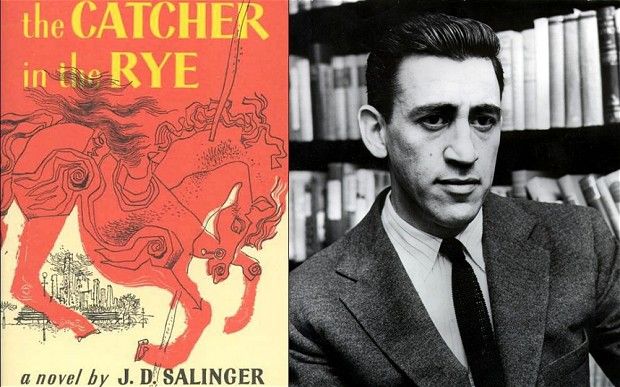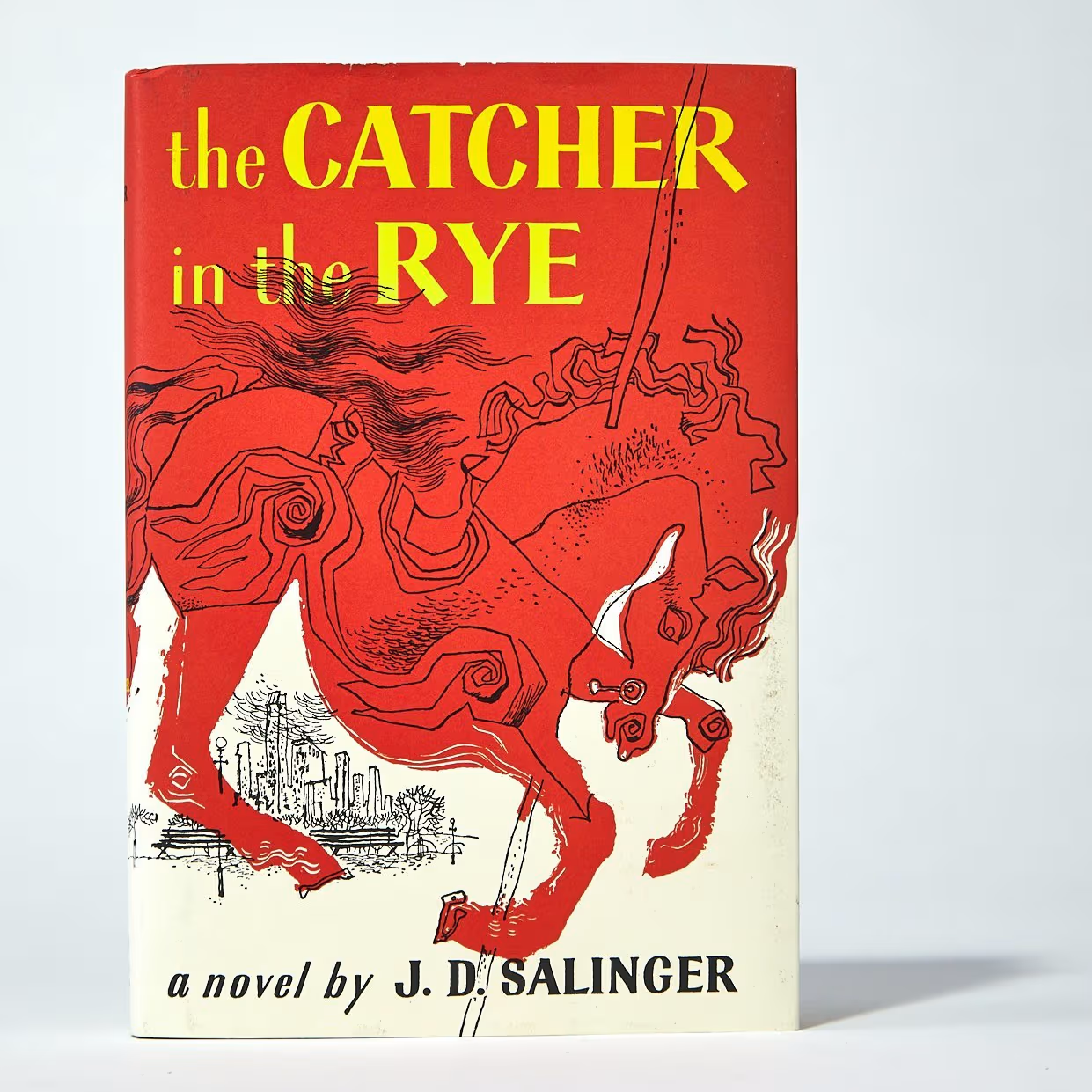Picture yourself wandering through the lively streets of New York City, where the story pulls you into the thoughts of a young man named Holden Caulfield.
He’s a fascinating teen grappling with the ups and downs of adolescence.
As Holden moves through his world, he wrestles with feelings of alienation and a strong desire to shield the innocence of those closest to him.
Key moments emerge, throwing him deeper into a chaos of phoniness that he can’t stand. This narrative gives us an honest glimpse into those times when growing up can feel like a lot to handle, making it a story that explores the alienation and phoniness of adolescence in New York City while ultimately seeking to preserve innocence.
Holden Caulfields Journey Through Adolescence
Imagine being a teenager trying to make sense of everything around you. That’s where we meet Holden Caulfield, a character who perfectly embodies the struggles of transitioning from childhood to adulthood.
His journey is marked by rebellion against societal norms, painting a vivid picture of coming-of-age challenges.
Throughout the story, his fluctuating mental health plays a crucial role in shaping his internal battles.
With a blend of cynicism and sensitivity, we see how his worldview becomes complicated, especially after the heartbreaking loss of his brother. This event triggers a deep questioning of authenticity in a world he finds so phony.
The themes of alienation and isolation echo throughout his narrative, making his experiences all the more relatable. Often enveloped in loneliness, his style of storytelling creates a connection with themes of mental health and coming-of-age rebellion, using symbolism to enhance the narrative.
Exploring Themes Of Alienation And Isolation
Every individual’s experience of feeling distant from others can shape their reality in unique ways, much like how it unfolds for Holden. His childhood plays a significant role in cultivating this sense of separation throughout the story.
As we journey through the narrative, there are poignant moments where he grapples with profound feelings of estrangement from his peers and family.
For example, the complex family dynamics surrounding his relationships, particularly with his brother D. B.
And the haunting memories of his younger brother Allie, deeply influence his emotional landscape. This grief not only fuels a sense of betrayal but also marks the erosion of his innocence. It’s intriguing how the red hunting hat he clings to represents a shield against a world he feels he can’t truly connect with, embodying his isolation from family dynamics and childhood betrayals, while also reflecting his struggle with existentialism.
How New York City Shapes The Narrative
Imagine strolling through the bustling streets of a city that feels alive with stories. It’s more than just a backdrop; this vibrant place plays an essential role in shaping personal narratives.
Each corner can evoke nostalgia, revealing layers of relationships and experiences that define us.
Think about how school experiences intertwine with the city’s spirit, influencing who we become.
In countless novels, this urban landscape becomes a character in its own right, embodying themes of ambition and the daily battles faced by its residents. From the quiet coffee shops filled with whispered dreams to the lively subway stations that pulse with life, every moment offers deep insight into authenticity and human nature.
This exploration of themes naturally leads us to reflect on feelings of alienation and isolation, particularly in the context of depression, the quest for authenticity, challenging school experiences, complex relationships, and the bittersweet nature of nostalgia often colored by criticism.
The Role Of Symbolism In Salingers Work
Have you ever stopped to think about how everyday objects can hold layers of meaning beyond their simple appearances?. D. Salinger’s narrative universe, symbols like Holden’s red hunting hat do just that, reflecting his ongoing battle with societal norms and his quest for individuality.
This hat acts like a security blanket, a reminder of the comfort we all sought during our childhood.
Picture a moment when you wore something that made you feel untouchable, wrapped up in a sense of safety.
Holden’s carousel stands out as a poignant representation of childhood innocence and the bittersweet reality of loss. Isn’t it interesting how a carousel, a seemingly innocent ride, can touch on themes of youth and the inevitable march of time, revealing layers of irony and disillusionment as it mirrors societal norms and the loss that accompanies growing up.
Symbolism in Salinger’s Work
- Holden’s red hunting hat symbolizes his struggle against societal expectations and his desire for individuality.
- The hat serves as a security blanket, reminiscent of childhood comfort and safety.
- Holden’s carousel represents the innocence of childhood and the painful reality of growing up, highlighting themes of loss.
- The carousel’s cyclical nature reflects the inevitable passage of time and the disillusionment that accompanies it.
Understanding Mental Health In The Catcher In The Rye
Holden Caulfield’s journey is a fascinating exploration of how we connect with our emotions and the world around us. His experiences are laden with an array of feelings that bring to light the struggles he faces daily.
The narrative reveals a complex character, showing how his tough exterior masks deeper issues.
As we follow his path, we begin to notice how isolation and loneliness weigh heavily on him.
For example, the loss of his brother is a pivotal moment, burdening him with grief that shapes his identity. This illustrates how trauma can intricately influence one’s actions and sense of self.
Through compelling storytelling, Salinger offers a candid perspective on the realities of mental health challenges we encounter every day. As Holden navigates his increasingly disconnected world, his struggles with identity, storytelling, and the complexity of human emotions strain his ability to forge meaningful connections with others.
What Does Phoniness Represent In The Story
In a world filled with facades, the struggle to form genuine connections often feels daunting. For Holden Caulfield, this struggle is central to his outlook on life.
He experiences deep loneliness, perceiving those around him as insincere and fake.
This tension is vividly portrayed in his interactions with various characters, each encounter highlighting his desire for authenticity while he’s met with mere pretenses.
Holden’s interactions serve as a reflection of this ongoing conflict, emphasizing how these artificial behaviors act as barriers to his dreams and aspirations. As he navigates through these relationships, it becomes clear that phoniness not only reveals his insecurities but also mirrors the struggles faced by others, transforming the theme into a poignant commentary on the human experience of loneliness, shaped by diverse worldviews and aspirations, highlighted through satire and reflections on unfulfilled dreams.
Genuine Connections
- Research shows that authentic relationships contribute significantly to emotional well-being.
- Studies indicate that feelings of loneliness can have adverse effects on mental health.
- Phoniness in social interactions is often linked to increased feelings of isolation and disconnection.
- Satire is a powerful tool in literature that critiques societal norms and highlights the human experience of loneliness.
Reflections On Innocence And Rebellion In Youth
You ever notice how the journey through youth often dances between purity and a hint of defiance? It’s those fleeting moments that make everything feel fresh and unblemished. Take Holden Caulfield from “The Catcher in the Rye,” for example.
He captures that push and pull, striving to cling to his sense of wonder while grappling with the weight of truth.
Defiance also plays a significant role; it’s like a spark igniting a deeper understanding of our own motivations.
When characters step beyond boundaries, it can lead to growth and a richer self-discovery.
As we explore how these elements connect, it’s fascinating to see how they shape our identities amidst various influences. A thought-provoking question arises regarding how the truth influences character development, motivations, setting, and conflicts.
Conclusion
Looking back at our exploration of this narrative, we discover a treasure trove of meaning waiting to be unpacked. The protagonist’s journey serves as a mirror, prompting us to reflect on our own youthful paths filled with twists and turns.
Final Thoughts: The allure of this tale stretches beyond simple entertainment; it deeply influences our perspectives on the trials of growing up.
Key Points to Discuss: As we ride this emotional rollercoaster, we’re introduced to characters who embody society’s expectations, their struggles echoing our own unconventional experiences.
Each character teaches us about self-discovery, revealing that every youthful adventure is laced with invaluable lessons. How has this narrative reshaped your view of youth and its role in introspection, self-discovery, and the legacy of unconventional perspectives and tone?.
Youth and Self-Discovery
- Research shows that young adults often face identity crises, prompting deeper self-reflection.
- Studies indicate that narratives and storytelling can significantly influence personal growth and understanding.
- Characters in literature often represent societal norms, helping readers navigate their own experiences.
- Engaging with unconventional narratives fosters resilience and adaptability in facing life’s challenges.
Originally posted 2024-11-19 08:59:43.



